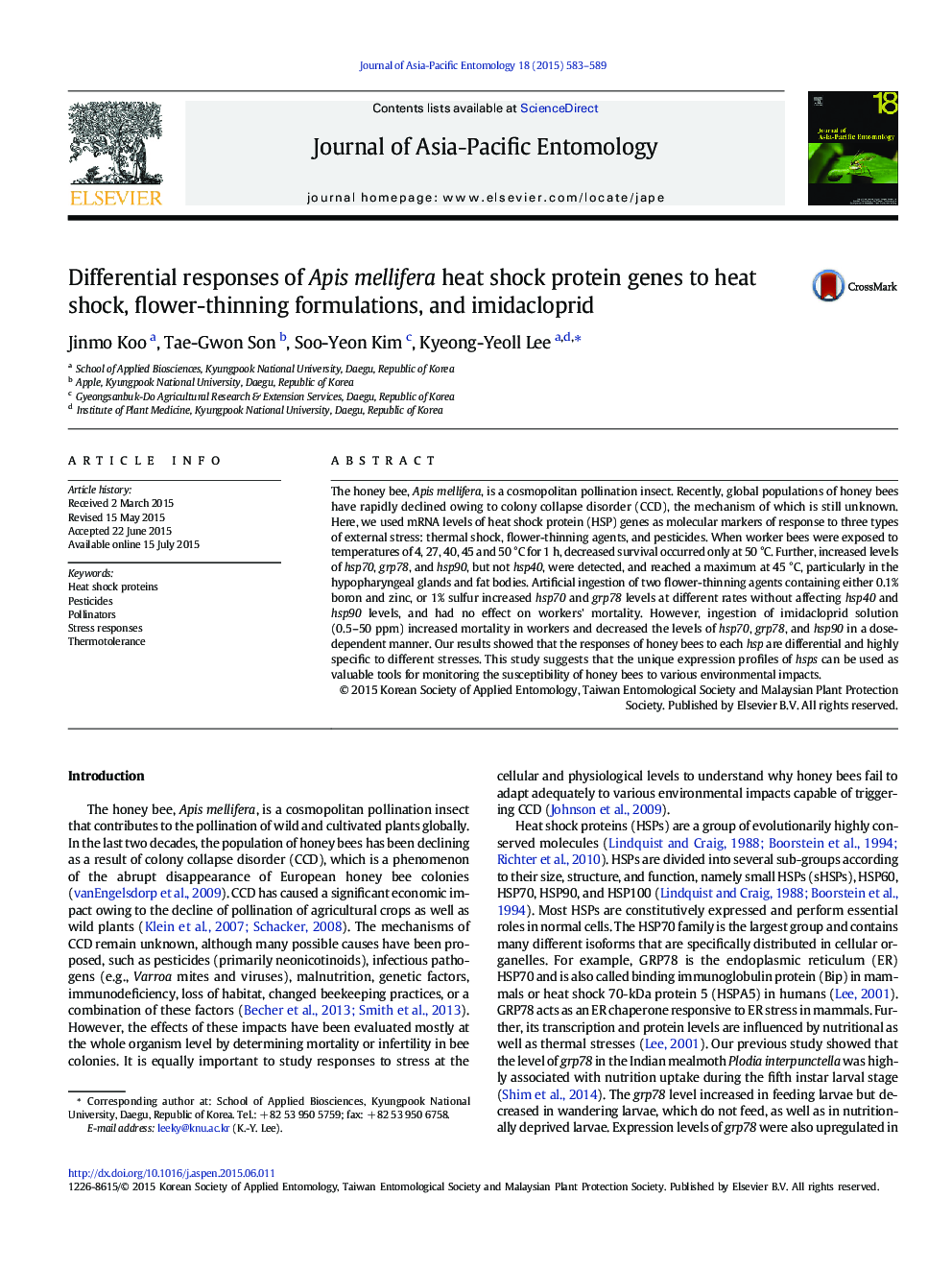| کد مقاله | کد نشریه | سال انتشار | مقاله انگلیسی | نسخه تمام متن |
|---|---|---|---|---|
| 4524669 | 1323585 | 2015 | 7 صفحه PDF | دانلود رایگان |
• Four hsp levels of Apis mellifera were monitored as stress responses of temperature, thinning agents and imidacloprid.
• Responses of each hsp was differential and highly specific to different stresses.
• Unique pattern of each hspcan be used for monitoring the environmental susceptibility of honey bees.
The honey bee, Apis mellifera, is a cosmopolitan pollination insect. Recently, global populations of honey bees have rapidly declined owing to colony collapse disorder (CCD), the mechanism of which is still unknown. Here, we used mRNA levels of heat shock protein (HSP) genes as molecular markers of response to three types of external stress: thermal shock, flower-thinning agents, and pesticides. When worker bees were exposed to temperatures of 4, 27, 40, 45 and 50 °C for 1 h, decreased survival occurred only at 50 °C. Further, increased levels of hsp70, grp78, and hsp90, but not hsp40, were detected, and reached a maximum at 45 °C, particularly in the hypopharyngeal glands and fat bodies. Artificial ingestion of two flower-thinning agents containing either 0.1% boron and zinc, or 1% sulfur increased hsp70 and grp78 levels at different rates without affecting hsp40 and hsp90 levels, and had no effect on workers' mortality. However, ingestion of imidacloprid solution (0.5–50 ppm) increased mortality in workers and decreased the levels of hsp70, grp78, and hsp90 in a dose-dependent manner. Our results showed that the responses of honey bees to each hsp are differential and highly specific to different stresses. This study suggests that the unique expression profiles of hsps can be used as valuable tools for monitoring the susceptibility of honey bees to various environmental impacts.
Figure optionsDownload as PowerPoint slide
Journal: Journal of Asia-Pacific Entomology - Volume 18, Issue 3, September 2015, Pages 583–589
